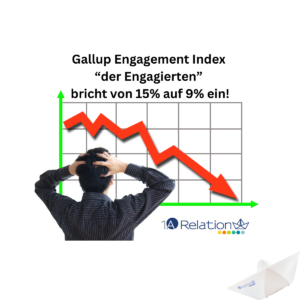Selecting the right software is a strategic decision that is not made overnight. The OMR Review x Appinio study shows which factors are crucial for companies when purchasing software – and which mistakes software providers should avoid.
Selecting the right software – This decision-making process is long and complex
Software purchasing decisions rarely follow a linear path. Companies go through a multi-stage buying journey with repeated evaluation phases.
- 40% of companies take weeks or even months to identify suitable software
- and
- 36% compare providers over a long period of time before making a decision.
👉 Tip for users:
💡 Define use cases and processes at an early stage and derive the requirements from them, get expert support in your search for relevant providers, and don’t short-list too many.
Compare providers based on sticking points. These include different costs, functional criteria, and fulfillment of the required use cases.
👉 Tip for providers:
Be patient and be continuously present – support the decision-making process with guided demos, free, guided test phases and helpful content.
When giving presentations, always make sure that you present in the customer’s language if possible.
Less is more. That means not showing too many masks and instead showing a few, but customized use cases.
Keep an eye on the time so that there is still time for questions at the end.
🔍 2. Choosing the right software – usability beats price
Good UX and easy implementation are often more important than price.
- 80% of buyers value intuitive operation.
👉 Tip for users:
⚙️ Software should be easy to use – but it should also be easy to integrate into existing systems.
It should not be the key users who decide what is intuitive, but the “normal” user.
More on the topic of software selection for users
👉 Tip for providers:
🎯 UX is a decisive competitive advantage! Clear user guidance, easy learnability and an intuitive interface are more important than aggressive pricing strategies.
Networking of objects is a second important success factor. This means that contacts, criteria, contact persons, documents per category, purchasing, communication, etc. should be displayed in the best possible network.
More about software selection for providers
🔍 3. Choosing the right software is teamwork
- In 66% of companies (up to 49 employees), three people are involved.
- In larger companies, there are often six or more decision-makers involved.
- IT is heavily involved in 72% of cases.
👉 Tip for users:
👥 Involve all relevant stakeholders at an early stage – especially IT – to avoid implementation issues later on.
This also includes the HR department, the works council or the data protection officer.
👉 Tip for providers:
📢 Address multiple target groups: In addition to C-level and decision-makers, also include end users and IT professionals.
C-level in particular should be involved in order to present themselves as drivers of the topic as early as possible.
🔍 4. Ratings & comparison platforms are crucial
- 38% of 25- to 44-year-old buyers use rating platforms such as OMR Reviews.
- 62% prefer software with at least 4-star ratings.
- More than 74% of software buyers write ratings themselves.
👉 Tip for users:
Use ⭐ reviews as a decision criterion, but critically question them! Check the number, quality and timeliness.
Neutral consultants can help with the pre-selection to develop suitable products or system landscapes.
👉 Tip for providers:
📝 Pursue an active evaluation strategy – motivate users to share their experiences. Regular new reviews increase credibility.
Look left and right to see what other projects a company’s users are working on. With this knowledge, much better solutions can be proposed.
🔍 5. Video content strongly influences purchasing decisions.
- 51% of buyers use video tutorials to decide on software.
- Video and demos are often more meaningful than classic white papers or PDFs.
👉 Tip for users:
🎥 Use videos to get a real insight into features and use cases.
But be careful: in most videos, the use cases are of course the cherry on top from the providers.
👉 Tip for providers:
📽️ Establish video content as an integral part of your marketing mix: demos, tutorials & case studies help build trust.
Use more advertorials as a neutral source instead of your own PR, because this way you can reduce self-promotion.
🚀 Conclusion: The future of software procurement is data-driven & collaborative
Selecting the right software is no easy task because too much money is at stake. Companies should therefore approach the selection process strategically and use evaluation platforms, test phases and user feedback in a targeted manner. This means that extensive research on evaluation platforms or the use of experienced, neutral consultants is extremely helpful.
Software providers, on the other hand, should be aware that buyers are increasingly relying on ratings, UX and transparent communication, so one goal suggests itself: motivate your own users to leave ratings.
What experiences have you had with software selection processes? Join the discussion!
Are you currently facing a selection phase? Then get neutral advice.












